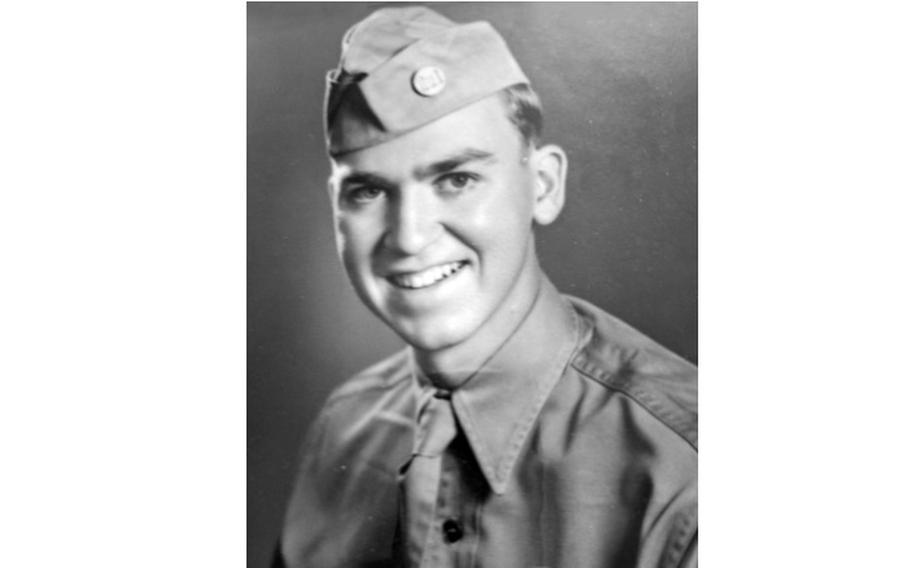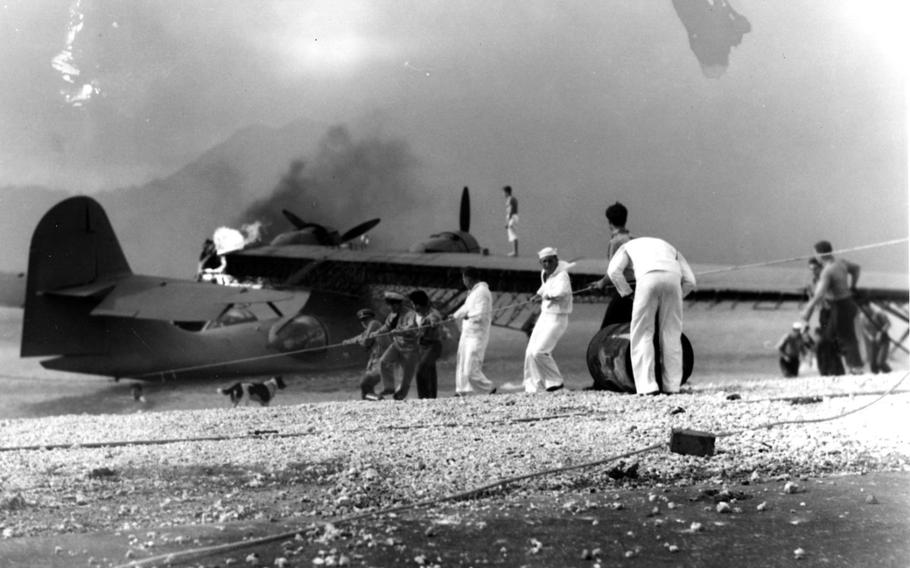
Vaughn P. Drake Jr. poses in his Army uniform in this undated photo taken during World War II. (Pacific Historic Parks)
Vaughn P. Drake Jr., who at 106 was believed to be the oldest surviving veteran of the 1941 Japanese surprise attack on Hawaii, died Monday in Lexington, Ky.
Drake was a 23-year-old Army engineer helping to build barracks at Kaneohe Naval Air Station on the windward side of Oahu when the attack took place on Dec. 7, 1941, according to a Facebook post Friday by Pacific Historic Parks, which announced his death.
Just over a dozen veterans who survived the attack are known to still be living.
Drake was born Nov. 6, 1918, in Winchester, Ky.
He was assigned to the Army Corps of Engineers while at Kaneohe Naval Air Station, where he was in charge of operating a temporary power plant to assist carpenters in building new barracks, Drake told the Lexington Herald-Leader newspaper in a Dec. 7, 2016, interview.
The air station is now part of Marine Corps Base Hawaii, which is on the opposite side of the island from Pearl Harbor, the primary target of the attack.
“We were getting ready to go to breakfast, and we heard all these planes flying over and making a lot of noise,” Drake told the newspaper. “We just figured it was the Army Air Corps carrying out maneuvers for practice, like they did a lot. We didn’t pay much attention to it.”
Then, standing in the chow line, they saw planes diving toward the air station, he said.
“And we thought, ‘Boy, they’re really putting on a good show.’ Even though we saw the red spots on the wing — which was the Japanese symbol — we still couldn’t believe it [was an enemy attack].”
The attack became real when a bomb hit a building on the air station and exploded, he said.
“We knew by then it was more than maneuvers,” he said. “It had to be a real attack. It just didn’t seem possible. Even while it was happening, we didn’t believe it.”
Moments later, an officer who had been in phone contact with Schofield Barracks in central Oahu — which was under attack — shouted to the gathered men.
“The Japanese are attacking the whole island!” Drake recalled the officer bellowing.
The air station was home to 36 PBY Catalina amphibious planes, dubbed “flying boats.” Twenty-seven were destroyed in the attack, with the remaining badly damaged.

Sailors attempt to save a burning PBY Catalina plane at Kaneohe Naval Air Station, Hawaii, during the Japanese surprise attack on Dec. 7, 1941. (Naval History and Heritage Command)
The Japanese lost 29 planes in the attack, the first of which was shot down at Kaneohe Naval Air Station. Drake told the newspaper he remembered seeing the plane crash.
“Later that day, some of us went over there and tore some pieces out of it, and this is a little control stick that I got,” Drake told the newspaper as he displayed the memento. “I don’t know for sure what it is. … It’s got some Japanese writing on it, which I never did get translated.”
He continued to serve with the Corps of Engineers on Saipan during the Marianas campaign, according to an obituary published by Milward Funeral Directors.
After the war, Drake attended the University of Kentucky College of Engineering and was a registered engineer for more than 50 years.
He worked for the General Telephone Company for 36 years and retired in 1981 as valuation engineering manager. With that company, he designed and supervised construction of all the underground telephone conduits placed in the cities of Lexington, Morehead and Ashland in the 1940s and 1950s, according to the obituary.
His wife of 65 years, Lina Wilson Drake, died in 2011.
A military burial service will be held April 17 at Winchester Cemetery.